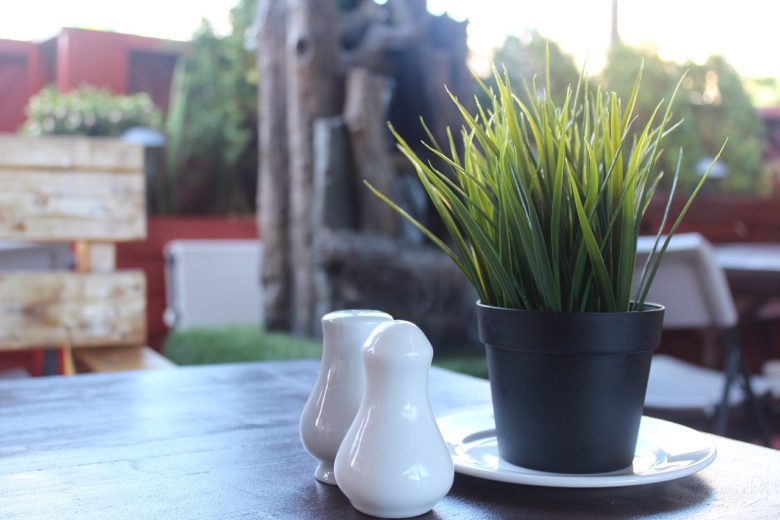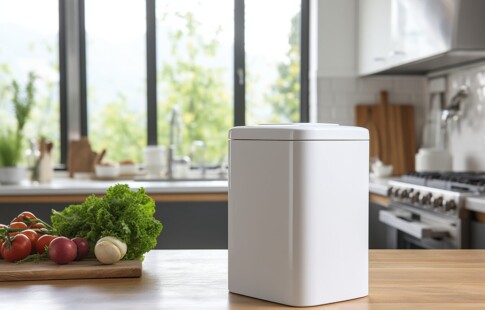
7 Tips for Sustainable Eating While Eating Out
We are reader-supported. When you buy through links on our site, we may earn affiliate commission.
You’re a conscientious eater when you’re at home, and you can be: you’re in charge of the shopping, the preparation and the disposal of all the food you eat there. At a restaurant, though, it’s harder to ensure that what you’re eating is just as sustainable as what you prep for yourself. To make the task a little bit easier, we’ve gathered the following seven tips to help you with sustainable eating while you’re out. So, grab your jacket and get ready to go: nothing’s holding you back from going out to eat anymore.
1. Ask For a Box
It’s no secret that today’s restaurants often pile up plates with extra-large portions of food that you simply cannot finish in one sitting. As such, many diners leave half a dish of food behind which will go straight into the trash. Simply asking for remnants of your meal in a takeaway box can help cut down on food waste. As an added bonus, you can grab your to-go box on the way to work tomorrow morning and you instantly have lunch prepped.
2. Drink From the Tap
More than $1 billion worth of plastic bottles are wasted every single year when Americans throw them into the trash instead of recycling them. This is just one of the many reasons why bottled water and other beverages are very eco-unfriendly. On your next restaurant trip, you can cut down on waste by ordering tap water instead of bottled. On top of that, forego any bottled or canned beers in favor of brews on tap. You can even order fountain sodas instead of cans, plastic bottles or glass bottles. Make sure you’ve expended all packaging-free options before choosing a drink that’s served in a one-time-use container.
3. Choose Farm-to-Table Restaurants
Eating at a restaurant with locally sourced ingredients means you’re majorly cutting down your cuisine’s carbon footprint. Think about it: rather than shipping exotic ingredients in from across the country and world, your meal will require way less fuel and waste to get from the farm to the plate in front of you.
4. Or Know What’s Sustainable Eating and What’s Not
Some places might not have farm-to-table restaurants, of course. Even so, you can do your part by researching the types of foods that tend to be unsustainable and either avoid them or ask the restaurant from where they source theirs. The most common offender is meat, as meat production requires so many resources. Think about it: livestock farmers have to grow animals to a plump adult size before shipping them off to be slaughtered, butchered, packaged and, once again, shipped to stores or restaurants.
The same goes for the harvest of fish. Figuring out which type of seafood is sustainable is another tough business, as there are many myths around the production and sale of seafood. For example, you don’t have to buy fish from a specialty shop or restaurant to ensure it’s sustainable, but knowing its origins can help you make a sustainable decision. Also, have a general idea of what fruits and vegetables are in season so they have a better chance of being fresh and local, rather than flown in from warmer, tropical locales.
5. Opt For Organic
It may seem like a no-brainer, but it’s worth mentioning the value of organically grown produce. Pesticides can run off into nearby soil, turf and water supplies, contaminating all three. Plus, the animals that inhabit these areas can become poisoned from their exposure to pesticides. Simply saying “yes” to an organic menu item can help you avoid contributing to this ongoing toxicity problem and perhaps even send a message to those whose products you now avoid because they’re produced with pesticides.
6. Say No to Too Many To-Go Bag Extras
If you’ve ever picked up an order to-go from a restaurant, you know that many establishments will load you up with disposable extras: napkins, plastic cutlery, extra straws, salt packets… the add-ons are endless. And, while these are convenient at the time, they might end up being tossed in the trash immediately by most customers, especially those who aren’t as environmentally aware as you. So, next time, ask the staff to leave out your plastic cutlery and napkins and use the ones you have at home instead. If you need sauce or other condiments to go, take only what you need (or refrigerate and use what you don’t this time around).
7. Download an App to Help You in Sustainable Eating
Even with the above tips in mind, you still might falter in your attempt to eat eco-friendly 100 percent of the time. You can always ask for help — and you don’t have to look much further than the phone that’s in your hand right now. There are plenty of smartphone apps to aid you in your quest. One points out vegan or vegetarian restaurants, while others tell you how sustainable menu items and ingredients are. With these tools literally in your pocket, you’ll find sustainable restaurant-ing to be so much easier. With these tips in mind, you can eat out and feel good that choice. So, start making plans and figure out which eco-friendly eatery you’ll be visiting first: you are definitely not the one cooking tonight.
Share on
Like what you read? Join other Environment.co readers!
Get the latest updates on our planet by subscribing to the Environment.co newsletter!
About the author
Jane Marsh
Starting from an early age, Jane Marsh loved all animals and became a budding environmentalist. Now, Jane works as the Editor-in-Chief of Environment.co where she covers topics related to climate policy, renewable energy, the food industry, and more.





